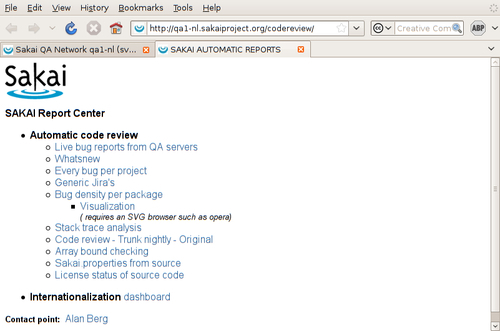Recognizing the ever-increasing cost in human resources of Quality Assurance as the code base expands, a refactoring of the Sakai code base is currently taking place. Roughly speaking, the project planners have separated the refactoring into two phases; the first phase is consolidation of core functionality, and the second is a significant overhaul of the underlying technologies. During both of these phases, the technical leads have placed emphasis on building in a significant degree of regression testing. If something gets broken during change, then the developers will find it before the Quality Assurance team.
A second line of defense is the automatic scrutiny of the main code base two to three times a day by the University of Amsterdam's QA server. The Amsterdam server automatically downloads the most current source and builds as shown:

Tools such as Findbugs (http://findbugs.sourceforge.net/) and PMD (http://pmd.sourceforge.net/) check the source code for bad...



